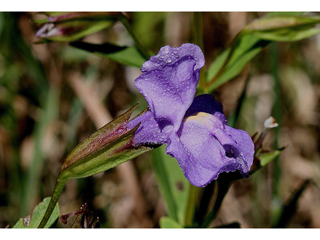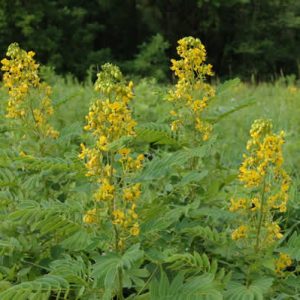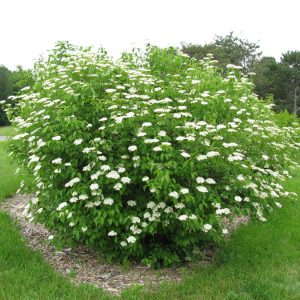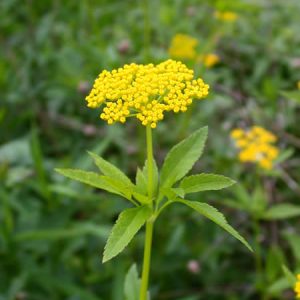
Mimulus ringens – Monkeyflower
This perennial plant is 1-3′ tall, branching occasionally to frequently. The light green stems are glabrous and bluntly 4-angled, but they are not conspicuously winged. The opposite leaves are up to 4″ long and 1″ across; they are light to medium green, lanceolate or elliptic-oblanceolate in shape, glabrous, and serrated to sparingly serrated along their margins. The leaves are sessile or they clasp the stems; petioles are absent. Leaf bases are round to slightly cordate, while their tips are slender and pointed. Individual flowers develop from the leaf axils of the middle to upper stems. These flowers are about 1″ long, and they have two-lipped corollas that are usually pale blue-violet (less often pink or white).
Available May – Mid May 2015

Ruellia humilis – Wild Petunia
Host plant – Common Buckeye Butterfly
Wild petunia occurs in dryish soils in open woods, glades, prairies and fields throughout the State except for the far southeastern lowlands. Typically grows to 2′ tall. Features tubular, bell-shaped, petunia-like flowers (to 3″ long), each with five shallow rounded lobes. May to October bloom period. Lavender to lilac flowers appear singly or in clusters in the upper leaf axils. Oblong to lanceolate, olive green leaves to 4″ long. Leaves and stems are hairy. This plant in on threatened list in the state of Michigan.
Available for shipping mid May

Senna hebecarpa – Wild Senna
Host Plant – Sulphur, Clouded Sulphur, Orange Sulphur
Wild Senna is a versatile plant that we think deserves more recognition as a great choice for garden or restoration projects. Its lovely, bright yellow flowers bloom July-August, attracting many bees and butterflies. Autumn brings beautiful leaf colors and the formation of long black pods with seeds favored by larger birds like wild turkeys. A horizontal root system provides strength against winds, allowing the plant’s stately (4-6′) beauty to be appreciated even after the storm. Some gardeners use this sun-loving plant to form a hedge.
It is virtually indistinguishable from its relative, Maryland Senna (Senna marilandica) until the two species have ripe seeds. The Wild Senna will readily open its pod and the seeds will fall out, whereas the Maryland Senna seed pods will stay tightly closed. Other than this, it is very hard to tell the two species apart.

Viburnum dentatum – Arrowwood Viburnum
Easily grown in average, medium, well-drained soil in full sun to part shade. Prune immediately after flowering since flower buds form in summer for the following year.
Noteworthy Characteristics
Arrowwood viburnum is an upright, rounded, multi-stemmed, deciduous shrub which typically matures to 6-10′ tall with a similar spread, but may reach a height of 15′ in optimum growing conditions. Non-fragrant white flowers in flat-topped corymbs (to 4″ diameter) appear in late spring. Flowers give way to blue-black, berry-like drupes which are quite attractive to birds and wildlife. Ovate, toothed, glossy dark green leaves (to 4″ long). Variable fall color ranges from drab yellow to attractive shades of orange and red. Although widespread in eastern North America, this native plant is only known to exist in the wild in Missouri on wooded slopes along the Salt River in Shelby County. Native Americans reportedly used the straight stems of this shrub for arrow shafts, hence the common name.
Problems
No serious insect or disease problems.

Zizia aurea – Golden Alexanders
Zizia aurea is one of those natives that every garden should have. It is fairly easy to grow and, although short-lived, will self-seed and persist in many sun/soil situations. Zizia is an important plant to a number of short-tongued insects that are able to easily reach the nectar in the small yellow flowers. Black Swallowtail caterpillars will feed on its leaves.
Golden Alexanders have a long bloom time, giving the garden/prairie some well-deserved early color for several weeks in late spring to early summer when many other plants have not yet flowered. Also called Golden Zizia, Golden Alexanders will tolerate a lot of shade but prefer full sun or light shade.
